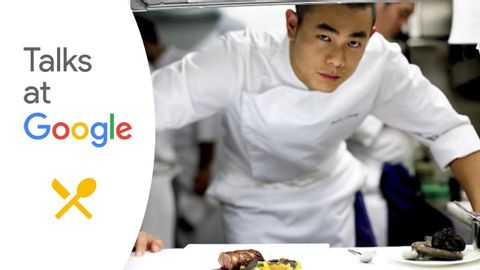
字幕與單字
蔣大廚:"創意與創新--廚房內外"--谷歌講座 (Chef André Chiang: "Creativity & Innovation — Both In and Out of the Kitchen" | Talks at Google)
00
Amy.Lin 發佈於 2021 年 01 月 14 日收藏
影片單字
process
US /ˈprɑsˌɛs, ˈproˌsɛs/
・
UK /prə'ses/
- v.t.用電腦處理(資料);(依照規定程序)處理;處理;流程;加工;理解
- n. (c./u.)(規定的)程序;過程;進程;方法;法律程序;進程
A2 初級多益中級英檢
更多 experience
US /ɪkˈspɪriəns/
・
UK /ɪk'spɪərɪəns/
- n. (c.)經驗;(學到東西的)經驗;經驗;經歷
- n. (c./u.)經驗;經歷;工作經驗
- v.t./i.經歷;體驗
A1 初級多益初級英檢
更多 time
US /taɪm/
・
UK /taɪm/
- n. (u.)節拍;(準確的)時間;時間(多寡);(經歷的)一段時光;(經歷的)時光;時代;時期;時間;時刻;時候
- v.t.測量(節拍);為...計算時機;計時;測量時間;使適時;安排...的時間
A1 初級多益初級英檢
更多 start
US /stɑrt/
・
UK /stɑ:t/
- n. (c./u.)開端;(某事的)開始;開始;出發點;突然一驚;嚇一跳
- v.t./i.開始;首次(做某事)
- v.t.使開始運轉;啟動
A1 初級初級英檢
更多 使用能量
解鎖所有單字
解鎖發音、解釋及篩選功能
